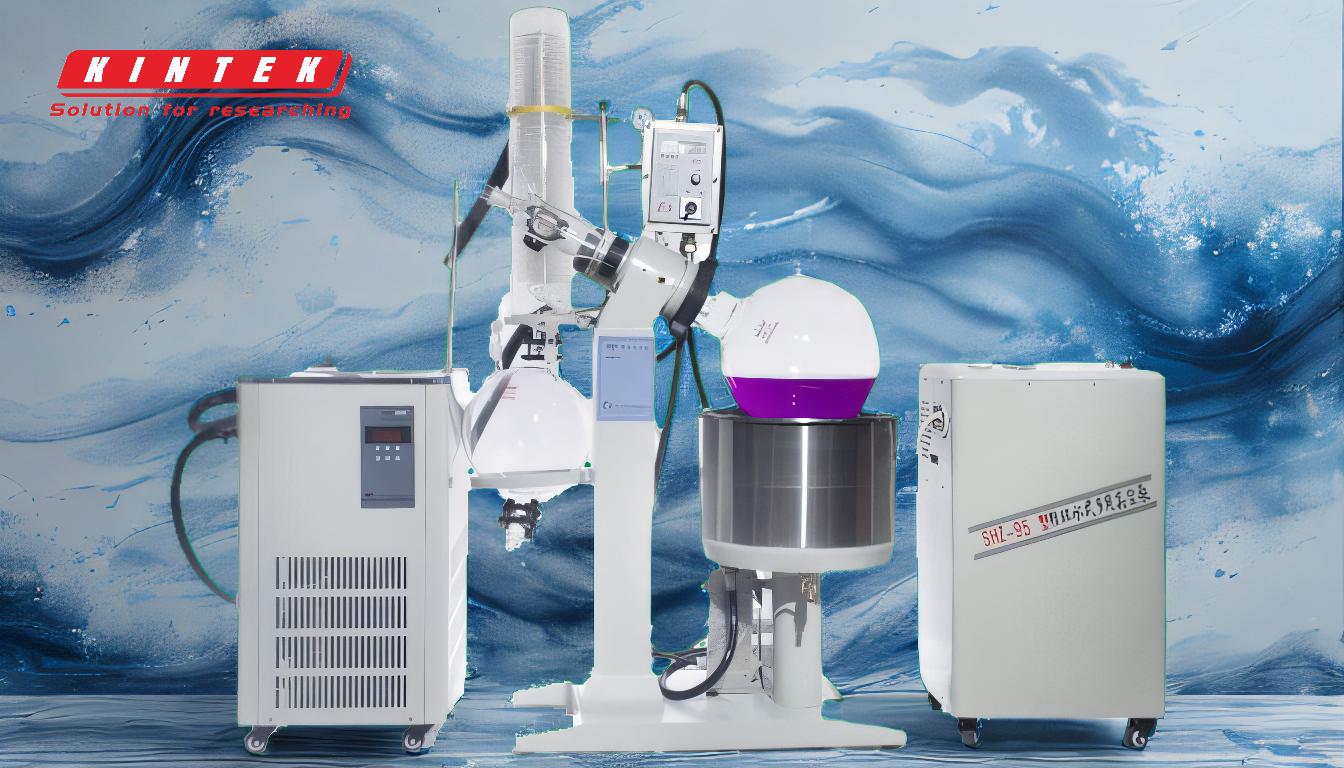Vacuum distillation should be used instead of simple or fractional distillation when dealing with mixtures containing liquids that have extremely high boiling points or are thermally sensitive, meaning they decompose or degrade at their normal boiling temperatures. By reducing the pressure inside the distillation apparatus, vacuum distillation lowers the boiling points of these components, allowing them to vaporize at much lower temperatures. This prevents decomposition, reduces energy consumption, and enables the separation of high-boiling-point compounds that would otherwise be impossible to distill under standard atmospheric conditions. Vacuum distillation is particularly useful in industries where high-purity compounds are required, such as pharmaceuticals, petrochemicals, and fine chemicals.
Key Points Explained:

-
High Boiling Point Compounds:
- Explanation: Vacuum distillation is ideal for separating liquids with boiling points above 392°F (200°C). At such high temperatures, many compounds decompose or polymerize, making simple or fractional distillation impractical.
- Application: For example, in the petrochemical industry, vacuum distillation is used to separate heavy crude oil fractions like lubricating oils and waxes, which have boiling points far exceeding 392°F.
-
Thermal Sensitivity:
- Explanation: Some compounds are thermally unstable and degrade when exposed to high temperatures. Vacuum distillation allows these compounds to boil at lower temperatures, preserving their integrity.
- Application: In the pharmaceutical industry, vacuum distillation is used to purify heat-sensitive active pharmaceutical ingredients (APIs) without causing thermal degradation.
-
Energy Efficiency:
- Explanation: By lowering the boiling points of components, vacuum distillation reduces the energy required to achieve vaporization compared to simple or fractional distillation at atmospheric pressure.
- Application: This is particularly beneficial in large-scale industrial processes, where energy savings can significantly reduce operational costs.
-
High-Purity Distillates:
- Explanation: Vacuum distillation is capable of producing high-purity distillates by minimizing the risk of decomposition and ensuring efficient separation of components.
- Application: In the fine chemicals industry, vacuum distillation is used to isolate high-purity solvents and reagents for research and manufacturing.
-
Combination with Other Techniques:
- Explanation: Vacuum distillation can be combined with steam or fractional distillation to enhance separation efficiency, especially for aromatic compounds or close-boiling mixtures.
- Application: For instance, in the fragrance industry, vacuum distillation is often paired with steam distillation to isolate delicate aromatic compounds from plant materials.
-
Industrial-Scale Advantages:
- Explanation: On an industrial scale, vacuum distillation offers benefits such as reduced product degradation, increased capacity, and higher yields. It also allows for the design of smaller distillation columns, reducing capital costs.
- Application: In refineries, vacuum distillation units are used to process heavy crude oils into valuable products like diesel and jet fuel, maximizing yield and minimizing waste.
-
Prevention of Polymerization:
- Explanation: Lowering the pressure and temperature in vacuum distillation prevents unwanted polymerization reactions that can occur at high temperatures, ensuring the quality of the final product.
- Application: This is critical in the production of polymers and resins, where maintaining the integrity of the monomers is essential.
-
Reduced Residence Time:
- Explanation: Vacuum distillation reduces the mean residence time of compounds in the distillation column, minimizing the risk of thermal degradation and improving product quality.
- Application: In the food industry, vacuum distillation is used to concentrate flavors and fragrances without compromising their quality.
In summary, vacuum distillation is a specialized technique that should be employed when dealing with high-boiling-point or thermally sensitive compounds. Its ability to operate at lower temperatures and pressures makes it indispensable in industries requiring high-purity products, energy efficiency, and the prevention of thermal degradation.
Summary Table:
| Key Aspect | Explanation | Application |
|---|---|---|
| High Boiling Point Compounds | Ideal for compounds with boiling points above 392°F (200°C) to prevent decomposition. | Petrochemical industry: Separating heavy crude oil fractions. |
| Thermal Sensitivity | Preserves integrity of thermally unstable compounds by lowering boiling points. | Pharmaceuticals: Purifying heat-sensitive APIs. |
| Energy Efficiency | Reduces energy consumption by lowering boiling points. | Large-scale industrial processes: Cutting operational costs. |
| High-Purity Distillates | Minimizes decomposition risk, ensuring efficient separation. | Fine chemicals: Isolating high-purity solvents and reagents. |
| Combination with Other Techniques | Enhances separation efficiency for aromatic or close-boiling mixtures. | Fragrance industry: Isolating delicate aromatic compounds. |
| Industrial-Scale Advantages | Reduces degradation, increases capacity, and lowers capital costs. | Refineries: Processing heavy crude oils into diesel and jet fuel. |
| Prevention of Polymerization | Prevents unwanted polymerization at high temperatures. | Polymer and resin production: Maintaining monomer integrity. |
| Reduced Residence Time | Minimizes thermal degradation risk by reducing compound exposure time. | Food industry: Concentrating flavors and fragrances without quality loss. |
Discover how vacuum distillation can optimize your processes—contact our experts today!












